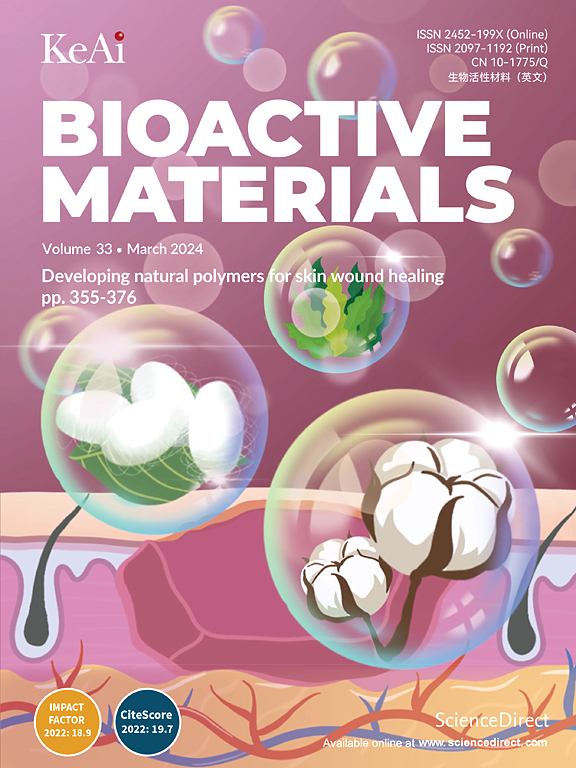Exosomes derived from MSCs exposed to hypoxic and inflammatory environments slow intervertebral disc degeneration by alleviating the senescence of nucleus pulposus cells through epigenetic modifications
IF 18
1区 医学
Q1 ENGINEERING, BIOMEDICAL
引用次数: 0
Abstract
Intervertebral disc degeneration (IDD) is the leading cause of low back pain, which places heavy burdens on society and individuals. Surgical intervention is the conventional therapy for IDD, but patients who undergo surgery face relatively high risks of recurrence and complications. Therefore, a relatively less invasive and efficient treatment for IDD is urgently needed. In this study, we constructed a novel nanobiomaterial, named Hi-Exos, to slow IDD. Hi-Exos are exosomes derived from mesenchymal stem cells exposed to hypoxic and inflammatory environments. Hi-Exos could relieve the senescence of nucleus pulposus cells and slow IDD through an epigenetic modification mechanism by introducing the epigenetic factor miR-221-3p into senescent nucleus pulposus cells to reduce DDIT4 expression and inhibit the activation of NF-κB signalling pathway. This study provided a novel strategy for IDD treatment involving the use of Hi-Exos to deliver miR-221-3p to reduce the senescence of nucleus pulposus cells and repair IDD via epigenetic modifications.

求助全文
约1分钟内获得全文
求助全文
来源期刊

Bioactive Materials
Biochemistry, Genetics and Molecular Biology-Biotechnology
CiteScore
28.00
自引率
6.30%
发文量
436
审稿时长
20 days
期刊介绍:
Bioactive Materials is a peer-reviewed research publication that focuses on advancements in bioactive materials. The journal accepts research papers, reviews, and rapid communications in the field of next-generation biomaterials that interact with cells, tissues, and organs in various living organisms.
The primary goal of Bioactive Materials is to promote the science and engineering of biomaterials that exhibit adaptiveness to the biological environment. These materials are specifically designed to stimulate or direct appropriate cell and tissue responses or regulate interactions with microorganisms.
The journal covers a wide range of bioactive materials, including those that are engineered or designed in terms of their physical form (e.g. particulate, fiber), topology (e.g. porosity, surface roughness), or dimensions (ranging from macro to nano-scales). Contributions are sought from the following categories of bioactive materials:
Bioactive metals and alloys
Bioactive inorganics: ceramics, glasses, and carbon-based materials
Bioactive polymers and gels
Bioactive materials derived from natural sources
Bioactive composites
These materials find applications in human and veterinary medicine, such as implants, tissue engineering scaffolds, cell/drug/gene carriers, as well as imaging and sensing devices.
 求助内容:
求助内容: 应助结果提醒方式:
应助结果提醒方式:


